Although this year’s AFEKT festival had a nominal theme, ‘Zwei Gefühle’ – from the eponymous work by Helmut Lachenmann – in practice it was a loose collection of thematic elements, primarily name-checking the 90th birthdays of Lachenmann and Arvo Pärt, and the 100th anniversaries of Berio and Boulez. Nonetheless, the presence of Lachenmann’s music had a powerful calibrating effect, making the act of listening feel quite different in its wake. This year the festival is broken into three parts, the main part of which i experienced in Tallinn and Tartu last week; two additional concerts will take place in late November and early December respectively (the latter of which includes the Boulez tribute).
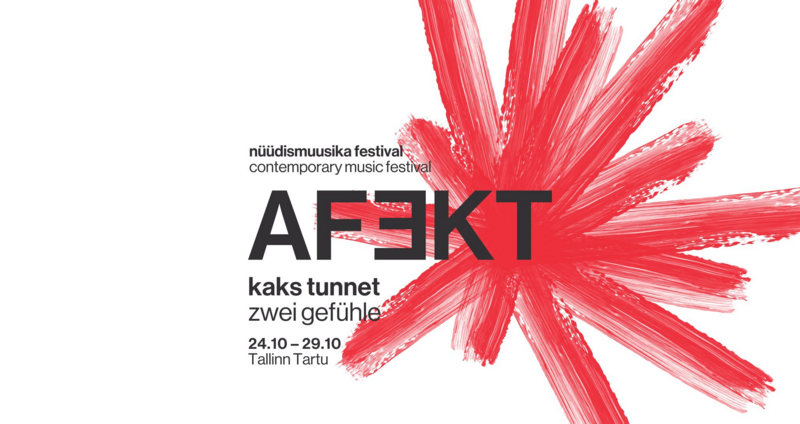
As in previous years, there was an emphasis on small-scale performances, lending the festival a pronounced intimacy. The one exception was the opening concert, featuring the Estonian National Symphony Orchestra (ERSO) conducted by Susanne Blumenthal, which in hindsight seems like a bit of an aberration. It was also surprisingly short, its three works totalling barely an hour’s worth of music.
Thankfully, in celebrating Arvo Pärt‘s 90th birthday, AFEKT focused entirely on what is by far the most (and, from my perspective, the only) interesting part of his output, the relatively small amount of music he composed before being struck down by chronic tintinnabulism. His 1963 Perpetuum mobile was a demonstration of beautifully compacted abstraction. Self-similar ideas jostled in close proximity, not so much out of sync with each other as moving according to concentric, sympathetic metrics, producing waves and ripples of coalescence out of turbulence. In terms of character, it exhibited a curious kind of stalemate. One sensed an urge in Pärt to aspire to similar levels of enormity as in Penderecki’s early sonorist works, yet the ostensible severity of Perpetuum mobile‘s harsher moments was undermined by its level of total organisational control. Ultimately, though, the compositional act itself was surely paramount here, at a time when exercising stylistic freedom was somewhat radical.
Helpfully, this opening event included Helmut Lachenmann‘s …zwei Gefühle…, featuring soloist Iris Oja. The performance conveyed a fantastical, post-lyrical mode of expression, not abstract but fragmented, dissolved and reconstituted (rather than reconstructed) into wholly new sound forms, shapes and means. As such, it felt impossible to draw straightforward conclusions about nature and tone. Fraught? Matter-of-fact? Unpredictable? Organised? Stream of consciousness? It had the effect of centralising the issue of engagement in new music, stripping away many or most of the familiar elements that act as a listening crutch and feed the conceit that we ‘understand’ what we’re hearing. In this performance, that was reinforced by the (either deliberate or accidental) placing of Oja’s vocals relatively low in the mix. No longer a vocal soloist, she became effectively just another instrument in the ensemble, her broken verbiage and vocalise paralleled by the inscrutable yet focused actions going on around her. As with the Pärt, here too was a work less about language than the act itself and its implications. The conclusion was magical, reducing down to almost nothing, kept going by the most ephemeral of sounds, less a musical fabric than a sonic gas.
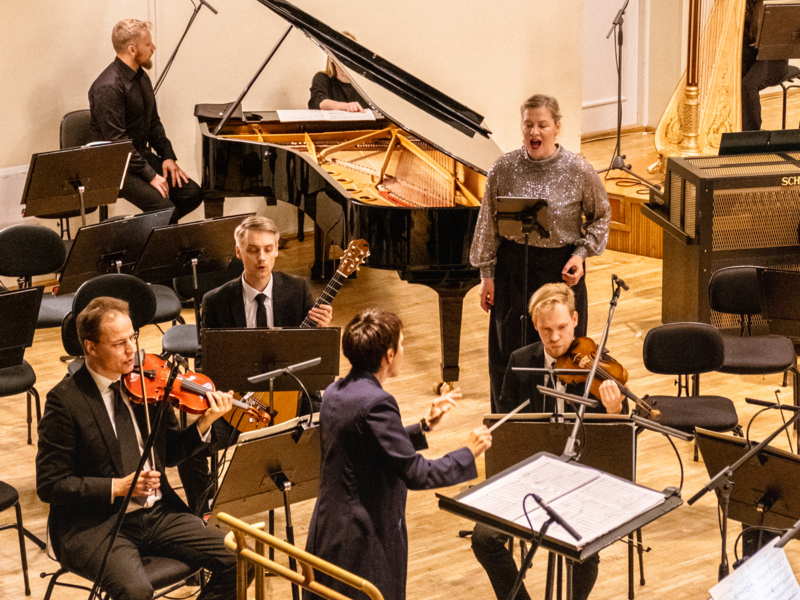
The conclusion of the concert was a definite anticlimax. Where Oja was (perhaps inadvertently) anti-soloistic, in the case of Jüri Reinvere‘s new Flute Concerto, flautist Monika Matthiesen seemed either unwilling or unable to assume a convincing role as soloist. Initially, there was a hint of instrumental collaboration. The flute: light, high and playful, toying with staccato rhythms; the orchestra: responding with a clear suggestion of something richer, more expansive, a way forward. The flute agreed, things progressed, but in the course of what followed that sense of interaction was more or less abandoned or forgotten. Reinvere oscillated between periods of intriguing exploration and dance-like episodes, the latter bringing things into sharper focus, at times drawing on tropes that were practically neoromantic. As such, the piece was at its most interesting elsewhere, in the less tangible, amorphous passages away from these metric grids and generic allusions. And alongside all this was the flute, a reserved, aloof, almost guarded presence, meticulous rather than expressive, occasionally linked by timbral or behavioural similarities but otherwise essentially separate from the orchestra, going it alone, indifferent to everything behind her. It was thus an uncertain music, the orchestra regularly returning to the tangibility of dance metres seemingly out of necessity, perhaps attempting to reconnect, not wanting to stray too long or too far into the uncharted regions of its polite, even twee landscape.
Lachenmann’s music was given special attention at an event titled ‘Listen Twice’, where two works from the late ’60s, Pression and temA, were performed twice, with a discussion in between (lost on me as it was entirely in Estonian). Pression came first, performed by Leho Karin. Throughout, my eyes claimed i was seated in a small bookshop near a busy intersection in Tartu. My ears told an entirely different story. This was a different world, a place where senses were redefined, where sensuality was expressed with nonchalance yet tended to extremes. Half-inaudible sounds – the lightest caresses of string, body, hair – were answered by intimidating, shudderingly violent creaks and grindings, Karin seemingly undecided whether to bring his instrument to orgasm or destroy it completely. Amid all the bowing, scraping, stroking and rubbing, only occasionally – seemingly accidentally – did his actions elicit something that could be identified as a ‘note’. Until, that is, a moment shortly before the end. Here, in every sense, was the climax: a loud near-unison on adjacent strings, as if the two pitches were trying to merge into each other in act of ultimate union. My experience of the first performance emphasised detail, while the second clarified the work’s broader, structural aspect, unfolding episodically like a sequence of carefully planned and executed experiments.
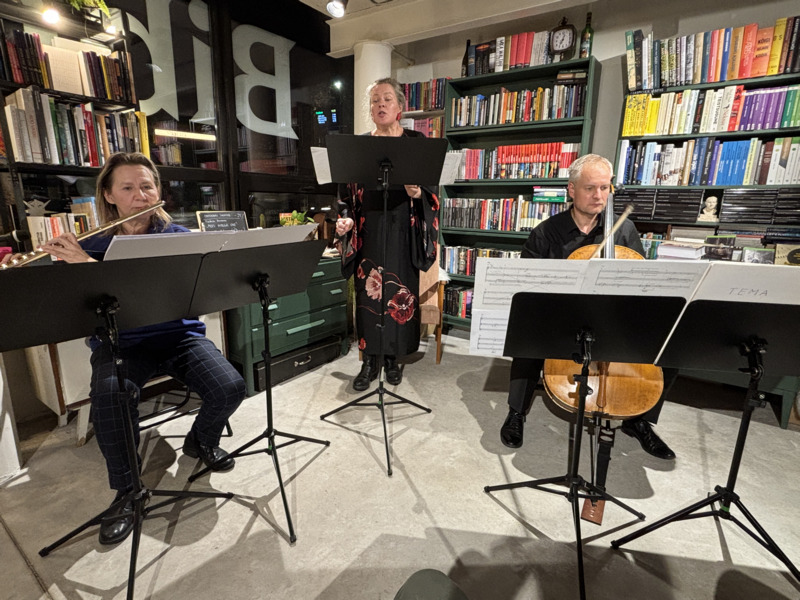
For temA, Karin was joined by Monika Matthiesen and Iris Oja. This spoke as an atomised music, the trio apparently working on bringing together collections of fragments to see what could be made from them. It was exciting, like a slow, non-methodical forming of what may or may not be regarded as something concrete (perhaps, considering the title, even a ‘theme’?). Yet when things finally coalesced, producing a cavalcade of exuberance, it was immediately cancelled out, falling away back to fragments and halting. Articulation broke down entirely, Oja seemingly unable to get sounds to emerge from her throat, with something threadbare materialising at the very end. It was no less discombobulating the second time, reinforced by an amazing crackling sound produced by Karin at the critical breakdown point, like the noise of fire or wood breaking. Stunning.
Are Luciano Berio‘s Sequenzas that interesting anymore? i revisited them all last year and found myself wondering whether, in many cases, they still retain something genuinely vital. So it was good to hear some of them afresh, at a concert in Tallinn’s Writers’ House, in the very literally named Black Ceiling Hall. It was an effective decision to allow the four works on the programme to progress without a break. Soo-Young Lee’s take on the 1983 Lied for clarinet, sounding from the back of the hall, served as an introduction. Relaxed, improvisational, smoothing Berio’s angular contours into a curved line, Lee played with such sense of intimacy it was as if she were playing to each one of us individually. This continued in Sequenza I, though now as brief periods permeating its wild, florid material. Nonetheless, Leonora Palu brought a thoughtfulness to her reading, shaping moments such that they suggested a reflective impulse below the surface.
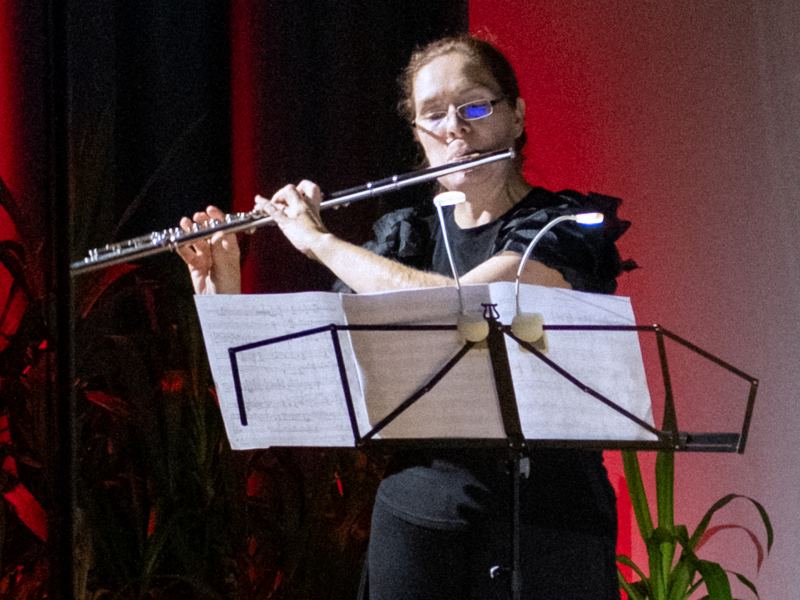
The expansion in this piece became an explosion in Sequenza III, at times reminding of the ERSO performance of Lachenmann in terms of seeming less about what was expressed than how. Iris Oja embodied the work’s complexity, shape-shifting in real time, inspired by something that could be essential, could be capricious, could be neither. The febrile words and fibrillating music continually varied in their level of tangibility, within what felt to be a much bigger form of outpouring. Mirjam Avango concluded the concert with Sequenza IX, acting as an epilogue: a complement to the opening Lied, an evocation of the mindset of Sequenza I, an echo (or an aftershock) of Sequenza III, extraverted, strong, insistent and playful. The question remains regarding the overall interest of these works, though there’s evidently life in these old dogs yet.
As it had during the ‘Listen Twice’ concert discussions, the language barrier also got in the way – much more seriously – in the concert that immediately followed the Berio, given by poet Sveta Grigorjeva and Leonora Palu (dubbed ‘Duo Affectus’ for the occasion). The premise was actually quite strange, a series of compositions (by Alexey Shmurak, Katarina Gryvul, Maxim Kolomiiets, Arvo Pärt, Palu herself and Jay Schwartz) performed in such a way that they interweaved with Grigorjeva’s words. Yet despite, at the time, not knowing the content of the poems, it felt clear almost throughout that they completely dominated the performance, to the extent that the compositions became incidental, even irrelevant. With one exception: Katarina Gryvul‘s Vacuum, which had serious power. It was like music on the surface of an alien planet, or in the deepest black of the ocean. Strange but immediate, rumbles and whistles, muted and muffled granular shifts, air and voice, swell and surge, heavyweight yet lighter than air.
i’ve been interested in Grigorjeva’s work for a few years, and i’ve able to spend time with an AI-generated translation of her text. It’s a powerful, deeply personal tract titled Mimmud maailmalõpu vastu [which roughly translates to Girls Against the End of the World], essentially looking both inward and outward – or, rather, considering what’s within (both actually and aspirationally) in relation to what’s outside: causes, effects, responses. It’s a piece impelled by, and culminating in, kindness and optimism, yet fuelled by disappointment, indignation and hurt. That’s a complex motor to drive any text, but Grigorjeva manoeuvres it through a landscape of both searing aggression and tenderness – different shades of pink – without sounding self-indulgent, crass or wilfully defiant. There are very few examples of her work available in English, and one can only hope that this text, and the various books of her poetry, might be translated soon. As far as this performance is concerned, i have no doubt at all that her words needed no accompaniment whatsoever. It is its own music.
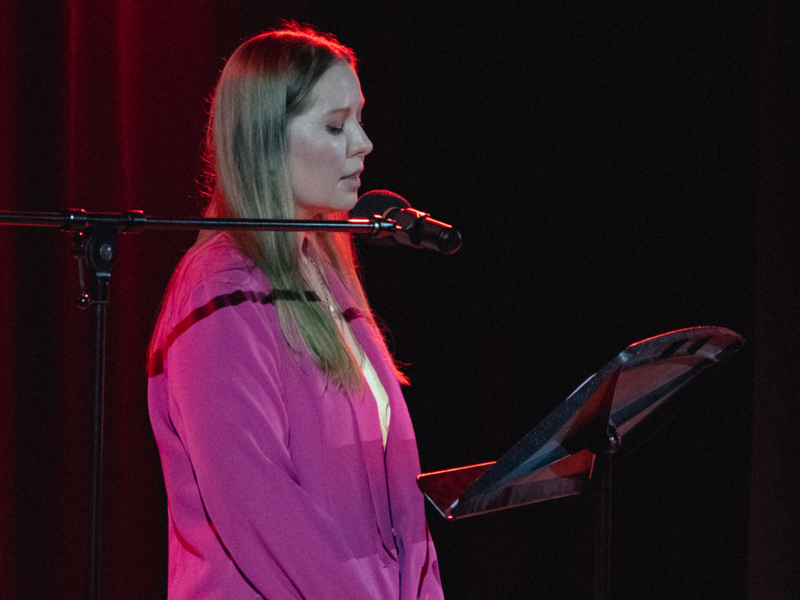
The ERSO concert is available to stream via the Klassikaraadio website.

